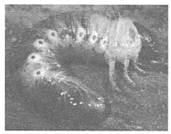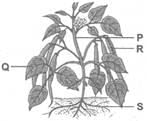Test: Plants And Animals - 2 - Class 5 MCQ
15 Questions MCQ Test - Test: Plants And Animals - 2
Saprophytes are organisms that feed on dead or decaying matter. They cannot manufacture their own food. Which of the following organisms is a saprophyte?
These are external respiratory openings present in the form of pores on the body of an insect. What are they called?


The blood of many animals is red because of the presence of this pigment containing iron. What is it called?
Seeds are vital to most plants as they help in propagation of the species, or in simpler words, help the plant produce the next generation. Which part of a plant contains the seed before it is dispersed?
Some animals are hunted illegally for their body parts. Which of the following statements is incorrect regarding animals and the reason they are being hunted for?
One of the main characteristics of this group of animals is that they have three pairs of legs. They also have wings. Which group of animals are we talking about?
Which animal breathes through gills when it is young, but breathes through lungs as an adult?
The seeds of the given plant are light and spongy. Which of the following help in the dispersal of seeds of the given plant?

Look at the given figure showing plant parts labeled as P, Q, R and S. Which of the following options incorrectly lists the plants in which labeled part is edible?

This part of the plant is called its food factory because it produces food for the plant using sunlight, water, and carbon dioxide. Which part of the plant is this?
Herbivores are animals that feed on plants, while carnivores are those that feed on animals. Omnivores, on the other hand, feed on both plants and animals. Which of the following is an omnivore?
All the plant products we use in our daily life did not originate in India. Which of the following spices originated in India?
Photosynthesis is the process by which a plant makes food. What does this process produce?
Which of the following shows the correct match of a plant and its mode of reproduction?



















